Stephania Root Fang Ji 防纪
$20.00
Out of stock
Description
Pharmaceutical name: radix stephania tetrandra (han fang ji 漢防己, 石蟾蜍, 粉防己)
radix aristolochiae fangchi (guang fang ji 廣防己)
radix cocculus trilobus (mu fang ji 木防己)
latin botanical name: han fang ji (fen fang ji): stephania tetrandra s. Moore,
guang fang ji (guang dong mu fang ji): aristolochia fangchi, wu; aristolochia westlandi, hemsl.
mu fang ji: cocculus trilobus dc.
pron. In japanese: boi
pron. In korean: bang gi (fang ji 防己);
kwang bang gi (guang fang ji 廣防己)
pron. In cantonese: fong ke
common name: stephania
distribution: han fang ji (fen fang ji) is distributed in zhejiang, anhui, jiangxi, hubei provinces.
guangdong mu fang ji (guang fang ji) is distributed in guang dong and guang xi provinces.
properties (characteristics) bitter in taste, acrid and very cold.
channels (meridians) entered: related to channels: bladder, spleen and kidney
actions & indications: usage: japanese han fang ji is being used as a pain reliever for inflammation of nerves, stiffness of the shoulders, gout and back pain. Chinese han fang ji is being used in bell’s palsy, asthma, edema (as a diuretic).
mu fang ji is being used as a diuretic for edema and for gonorrhea.
medical function: lab animals receiving sinomenin injections showed increase reflex functions, spasms, paralysis and death.
chinese han fang ji showed that it can regulate body temperature. Mu fang ji showed the properties of diuretics and relieved pain of nerve inflammation.
chemical ingredients: (1) . Han fang ji: chemicals consist of tetrandin c38h42n2o6 and fangchinoline c37h46n2o6.
han fang ji also is produced in japan. Its chemicals consist of sinomenin c19h22no4;
(2) mu fang ji (木防己) is distributed in guang dong and guang xi provinces.
its chemicals consist of mufangchinoline c14h21n14o11, thunbergin c20h14o9,
trilobine (木防己鹼 ), isotrilobine (異木防己鹼), magnoflorine ( 木蘭花鹼 ), trilobamine (木防已胺 ), normenisarine (去甲毛木防己鹼 ), menisarine (毛木防已鹼 ), epistephanine (表千金藤鹼), coclobine (木防己賓鹼), cocculolidine (葉含衡州烏藥裡定鹼 ).
more to be uploaded
dosage: 5-10 grams boiled with water.
samples of formulae: the formulae listed below may contain the toxic type of mu tong or fang ji. Consult your local regulations before using them.
ba zheng san 八正散 (contains mu tong)
chun yang zheng ji wan 純陽正氣丸 (contains qing mu xiang)
da huang qing wei wan 大黃清胃丸 (contains guan mu tong)
dang gui si ni wan 當歸四逆丸 (contains mu tong and xi xin)
mu xiang dao chi wan 木香導滯丸 (contains mu xiang and may be confused with qing mu xiang)
die da wan 跌打丸 (some die da wan formulae contain mu tong or fang ji)
guan xin siu he ge wan 冠心秀克閤丸 (contains qing mu xiang)
ji sheng ju he wan 濟生橘核丸 (contains mu tong and hou po)
kat kit wan 解結前列丸 (contains mu tong)
quell fire shi xiang fan shen wan 十香翻身(返神)丸
xin yi wan 心怡丸
cautions: using hanfangchin a for injection should not be over 300mg to avoid toxicity.
guang fang ji is produced in guangdong. It is also called guangdong mu fang ji. It belongs to the aristolochiae family and is toxic to the kidneys. 30 G is the toxic dosage.
guangdong mu fang ji (aristolochiae fangchi ) is not the regular mu fang ji ( cocculus trilobus). The whole plant is toxic. Animals or people eating the the flowers or leaves show symptoms of headache, dizziness, nausea, vomiting, abdominal pain, difficulty in breathing, numbness in limbs, etc.
廣防己全株有毒。
人畜誤食新鮮的莖葉或花,會造成頭痛、頭暈、噁心、嘔吐、腹痛、呼吸困難、四肢麻木等症狀。
note: historically those produced in han zhong are called han zhong fang ji and they mainly belonged to the aristolochiae family. Today, the herb fang ji goes through the area of han kou. So it is called han fang ji; it is not one variety.
usually in prescribing, if it is written as “fang ji” it is deemed to be “fen fang ji” unless it is written as “mu fang ji.”
處方中如不指明“木防己”而僅寫“防己”,通常認定為“粉防己”。
note: fu ke fen qing wan 婦科分清丸 shows up on the one of the warning sites of the fda, but the classical formula does not contain mu tong or fang ji or xi xin, any of which may contain aristolochic acid.
this statement has not been evaluated by the food and drug administration. This product is not intended to diagnose, treat, cure, or prevent any disease.
Additional information
| pinyin_name | FANG JI |
|---|---|
| chinese_name | 防纪 |


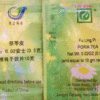
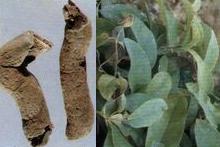
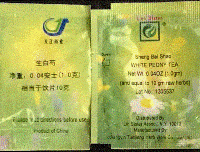
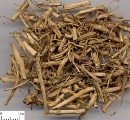
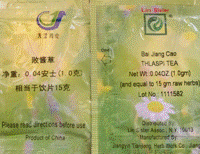
Reviews
There are no reviews yet.